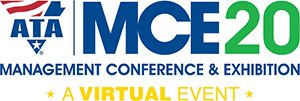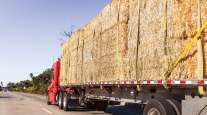Senior Reporter
Fleets Need to Navigate Changing NOx Standards
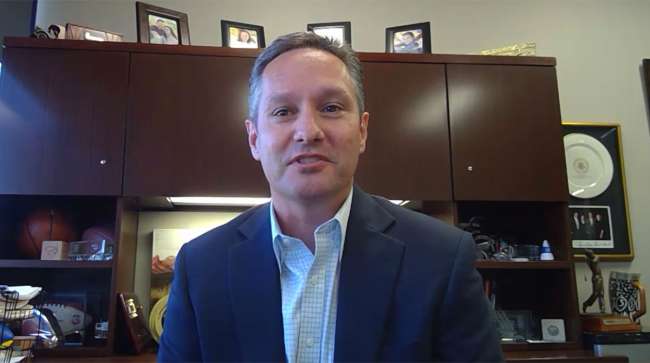
[Stay on top of transportation news: Get TTNews in your inbox.]
California put in place this summer sweeping regulations to increase sales of zero-emission commercial vehicles, and, separately, to slash allowable levels of nitrogen oxide in diesel trucks sold in the state — the world’s fifth-largest economy.
“It’s truly an unprecedented time in emissions regulations in the U.S. for on-highway. So much has happened in 2020, it’s really kind of remarkable,” Melina Kennedy, Cummins Inc. vice president of product compliance and regulatory affairs, said Oct. 26 during American Trucking Associations’ Management Conference & Exhibition.
California Air Resources Board adopted its Advanced Clean Trucks regulation in June, requiring manufacturers to sell an increasing number of zero-emission vehicles beginning in 2024. Other states are aligning with the mandate, too.
CARB approved a phased-in rulemaking in August that toughens its NOx standards. In part, it requires truck makers to comply with the standards and fleets to be responsible for ensuring compliance for their new trucks on the road. New, and likely more expensive, extended engine warranties are required to ensure that emissions of NOx, a key precursor of smog, are reduced to help California meet federal air quality standards and public health goals.
That was the assessment of industry experts speaking during the session titled “EPA vs. CARB Regulations: What does this Mean for a Fleet in 2022 and Beyond.”
They also raised questions about transfers to the state of onboard data regarding emission levels. Also mentioned were concerns over product planning efforts for new vehicles and the uncertainty emerging from a regulatory environment in which federal and state rules don’t yet align.
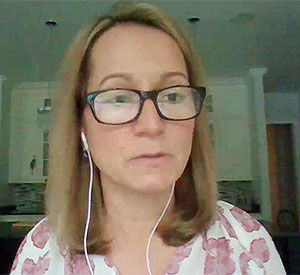
Melina Kennedy by Transport Topics
A portion of the Environmental Protection Agency’s Greenhouse Gas Phase 2 regulation remains tied up in court and its intended NOx rule is behind schedule.
CARB will reduce its current heavy-duty truck NOx standard from 0.2 grams per brake horsepower hour to 0.05 g/bhp-hr from 2024 to 2026 — a 75% reduction — and again to 0.02 g/bhp-hr in 2027 — or 90% less.
The NOx rule is a manufacturer requirement for trucks sold in the state and will not apply to trucks purchased outside California, a CARB spokesperson told Transport Topics.
“I think all of us as fleets are starting to wake up to concerns over data in general,” said Dave Williams, senior vice president of equipment and government relations for Knight-Swift Transportation.
“We have gone from a time of when, you get in the truck, run the truck and you are the only one who knows where it goes. Now there’s electronic control modules, engine control units and modems, in many cases from several different suppliers, garnering data off the vehicle,” Williams said. “CARB’s intent is to check basically our emissions, but at the same time the bigger question is who has access to what and what can they do with it.”
Williams also pointed out the burden for complying with emission standards on new trucks has fallen historically on the OEM.
“Now, what CARB is saying is they are going to check the effectiveness of the emissions system throughout its life. And if it doesn’t meet the standard, the fleet is going to be held accountable for that,” he said.
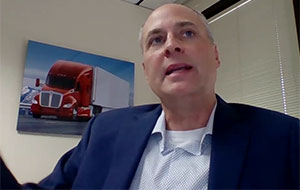
Doug Powell by Transport Topics
Doug Powell, director of fleet management for Kenworth Truck Co., said details on how CARB intends to collect emission data and limit how it will use the data will be resolved in the next six to nine months.
He said vehicle detection and fleet reporting will begin Jan. 1, 2023.
Enforcement will begin July 1, 2023, with periodic testing to commence in 2024.
“The biggest piece I see is really the quarterly data collection.” Powell said. “CARB is looking to have a back-office database where the data submissions will be noted.”
That data could be gathered by quick-stop testing locations throughout the state, including potentially at truck dealerships. Or through connections to onboard data.
On trucks pre-OBD, tests could be through a third-party mobile tester device, he said.
“The easiest way to seamlessly transfer the data would be through new software for the telematics systems many trucks now have,” Powell said.
As for CARB’s Advanced Clean Trucks mandatory timetable, in 2024 it will bring in-state sales of about 4,000 zero-emission trucks, 5% of which will be Classes 7-8.

Steve Slesinski by Transport Topics
Sales in 2030 will rise to 100,000 vehicles, with 30% in Classes 7-8.
Meanwhile, in July, 15 states and the District of Columbia jumped on board with California to adopt these policies for new medium- and heavy-duty trucks, said Steve Slesinski, director of global product management for Dana Inc.
“This is really important,” he said. “This is going to happen one way or another. If you just consider these 15 states plus D.C., they make up almost 50% of the U.S. economy and 40% by value of goods moved by trucks.”
Want more news? Listen to today's daily briefing:
Subscribe: Apple Podcasts | Spotify | Amazon Alexa | Google Assistant | More


